Randall Evans
November 2015
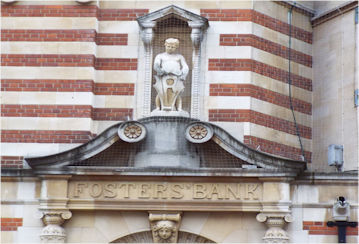
Randall Evans gave a presentation about the origin of the name ‘Foster Road’ at the Local History Group meeting on 12 November 2015. It is one of a number of streets named after local personalities, in this case the Foster family of Anstey Hall and Brooklands House.
There is are separate pages with information about the derivation of street names and the names of roads on the Estate.
Foster Road is one of the roads on the housing estate which was built to the east of the High Street in the 1940s. Foster Road is the road on the right as you approach Trumpington Pavilion when coming from the High Street. The road continues to the right as far as the entrance to the Cambridge Professional Development Centre and Fawcett School and the footpath towards Addenbrooke’s Hospital.
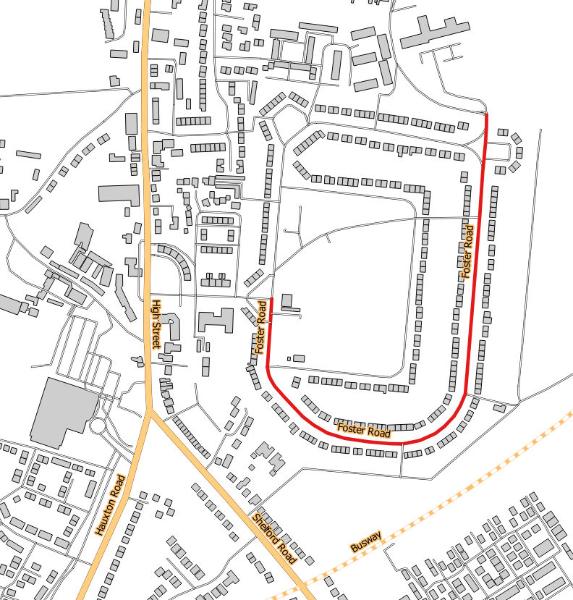
When the estate was being built, ‘Foster Road’ was not one of the initial list of names. The names submitted for roads on the estate were Anstee Way [sic], Byron Square, Selby Road, Kelso Crescent and Paget Road. This was revised by the Council to Anstey Way, Byron Square, Foster Road, Paget Road and Paget Close and so Foster Rd was agreed.
Why Foster? Ebenezer Foster and Richard Foster were brothers and merchants who owned a number of mills and founded a bank. The Foster Family were residents at Anstey Hall and Brooklands House for over 100 years.
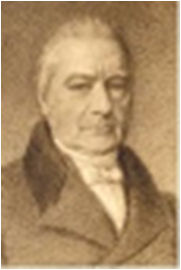
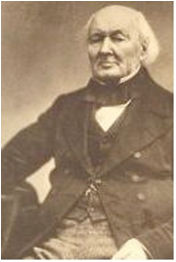
The Foster Family were at Anstey Hall from 1838 to 1941. In 1838 the Anstey family sold Anstey Hall to the Cambridge banker Ebenezer Foster (d. 1851). Foster’s Anstey Hall estate passed successively to his younger son, Charles Finch Foster (d. 1866), his elder son, George Ebenezer Foster (d. 1870), and the latter’s sons, Ebenezer Bird Foster (d. 1908) and Charles Finch Foster (d. 1922). Charles Finch Foster’s second son, George Ralph Cunliffe Foster, owned it, living at Anstey Hall from 1912 to his death in 1936. His heir was Percy George Cunliffe Foster (d. 1945) . Anstey Hall was sold to the Government and the farm land was sold to the sitting tenant, Mr Parsons, who in 1950 resold it to the Ministry of Agriculture for the Plant Breeding Research Institute. (See the churchyard walk, for the Foster family tree.)
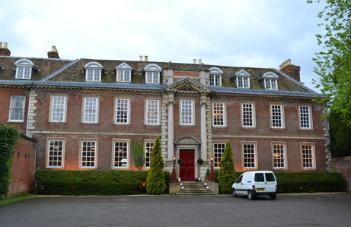
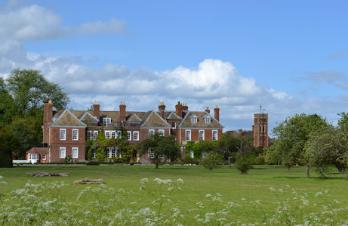
During the first half of the 19th century, the Brooklands Avenue area was used for farming. In 1825, Richard Foster, a partner in Foster’s Bank of Cambridge, bought Brooklands Farm and its lands from James Burleigh. He built himself a new house called Brooklands House in 1827. He placed this in the north-west corner of his estate and enclosed over five acres of land as a garden and parkland. ‘The Avenue’, now Brooklands Avenue, was at this time merely a driveway leading off Hills Road, with a lodge house at the junction with Hills Road. Another drive ran northwards to Trumpington Road, where there was a second lodge (Brooklands Lodge) which still survives within the Botanic Gardens and is also listed Grade II. The drive did not join Trumpington Road directly to the west of the house for many years, and even then a gate was erected to control access, manned by an employee of the Foster family. This was removed in the early part of the 20th century, when the Fosters no longer lived at Brooklands house.
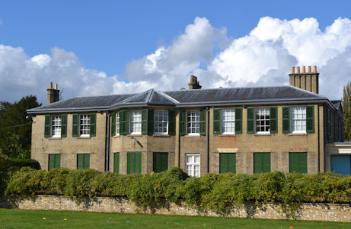
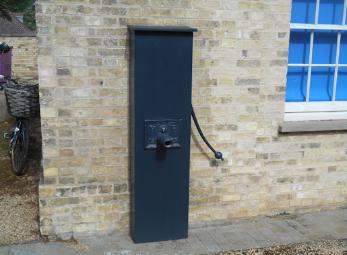
The Foster family was responsible for a number of other notable buildings in Cambridge. Fosters Bank (now Lloyds Bank) moved twice before settling in the current position on the corner of Sidney Street and Hobson Street. The name can still be seen above the main entrance. The bank and businesses passed down the family over generations until the bank was taken over in 1905. In 1905, Fosters Bank was amalgamated with the Capital and Counties Bank, which was absorbed in 1919 into Lloyds Bank.
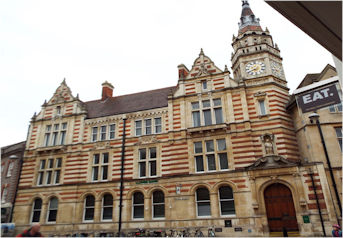

Foster’s Mill (also known as Foster Mills, Foster Mill and Spiller’s Mill), off Station Road, was built of painted gault brick in 1898, designed by the architects Calder and Kitchen of Hull. It is one of the largest buildings in Cambridge, as well as being one of the few examples of large-scale industry in the city. The Foster family owned three mills in the city but the University of Cambridge prevented them from constructing railway lines to the mills, so they built this mill immediately next to the railway station. In 1917 Foster’s Mill was sold to Pauls Agriculture and later to Spillers.
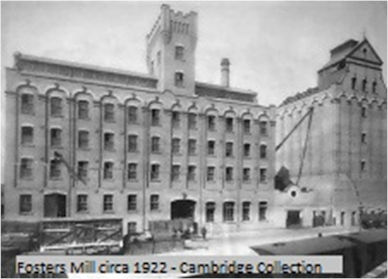
Pinehurst, Grange Road, was also owned by the family. Before the current flats were built, there was a suitably grand house in the grounds (known as Pinehurst, hence the name), dating from the early 1880s. In the 1920s, after the original owner, Charles Finch Foster, died, it was briefly occupied by a boarding school for girls.
The Foster brothers were also major shareholders, but not directors, in the ill fated Cambridge Roman Bath Company Limited which built a Turkish baths in Jesus Lane, under the chairmanship of one Septimus Beardmore. The baths were designed by Thomas Henry Wyatt (later president of Royal Institute of British Architects) and his brother Sir Matthew Digby Wyatt (first Slade Professor of fine Arts at Cambridge). They opened in February 1863, ceased trading in early 1864, and were sold to the Pitt Club in 1866.
The family were also actively involved in local politics. In addition to being Alderman, members of the family were Mayor of Cambridge on seven occasions between 1836 and 1862:
Ebenezer Foster, 1836-37
Richard Foster, 1839-40
Charles F. Foster, 1847-1848
Henry S. Foster, 1849-1850
Charles F. Foster, 2nd term 1854-55, 3rd term 1860-61, 4th term 1861-62